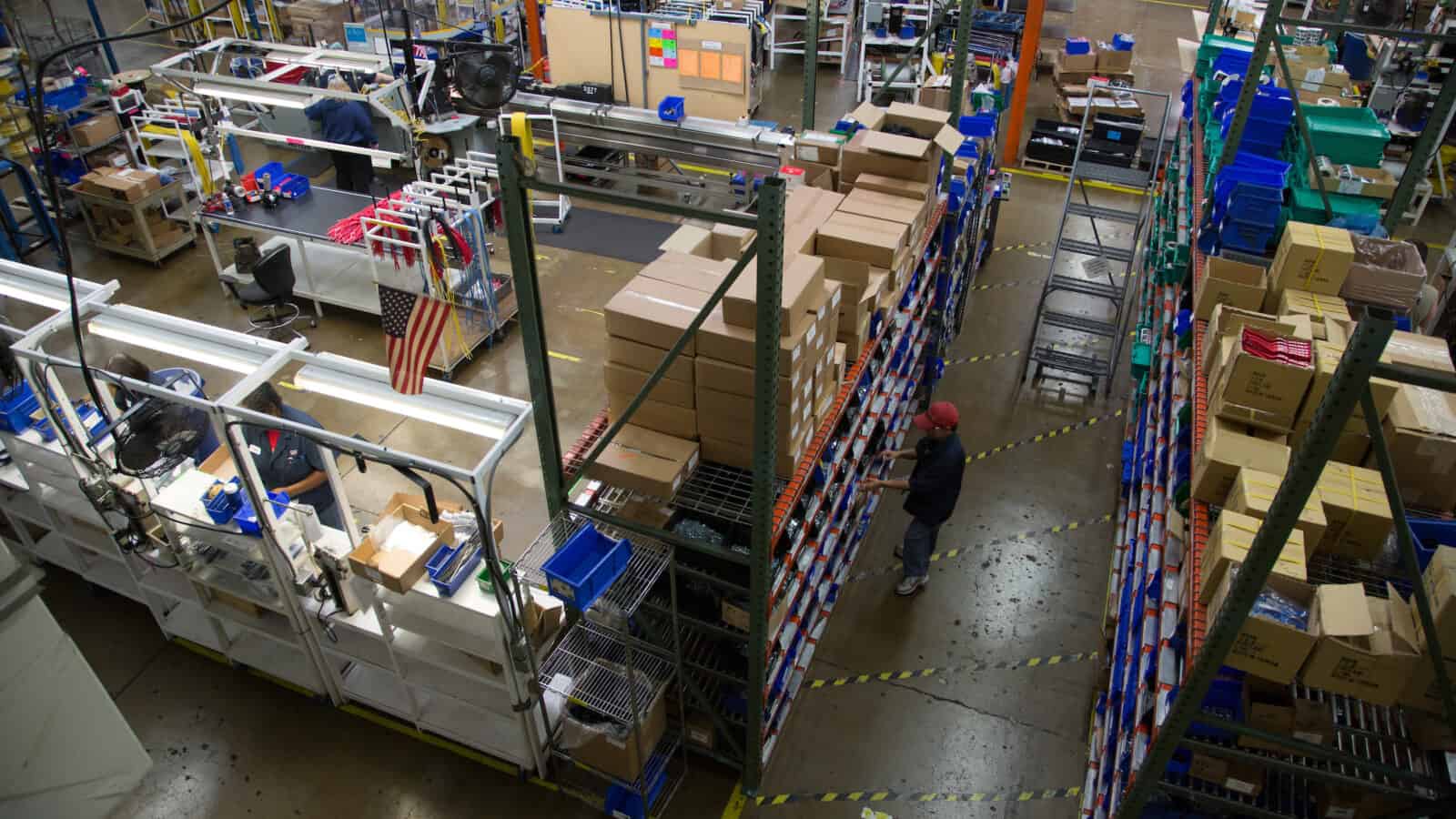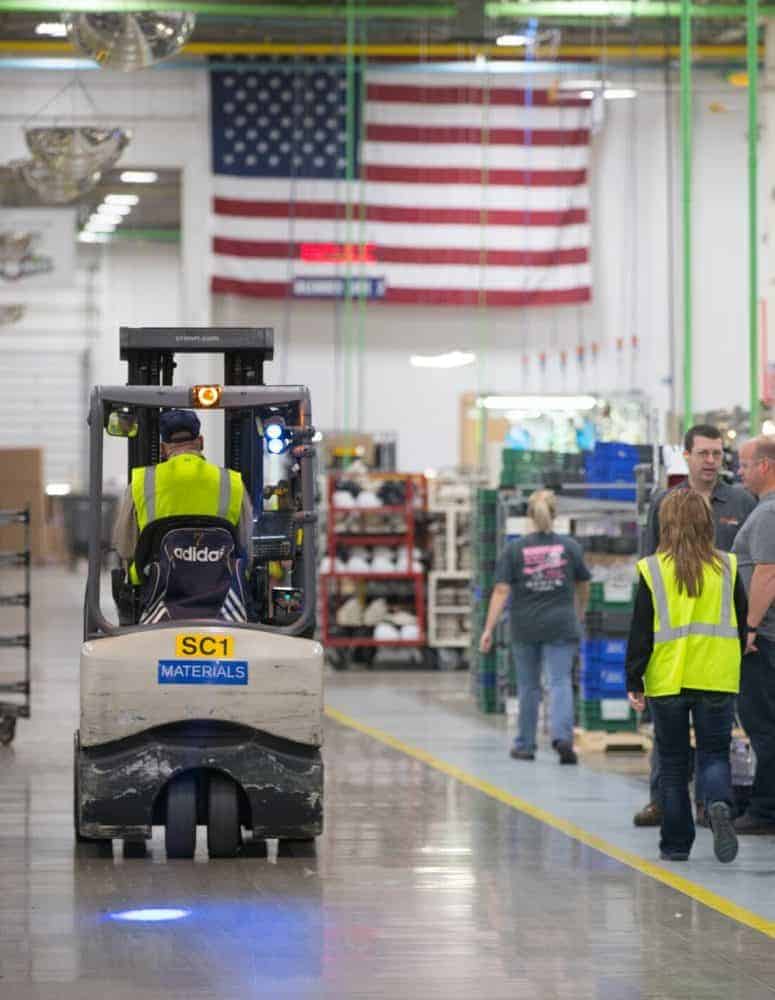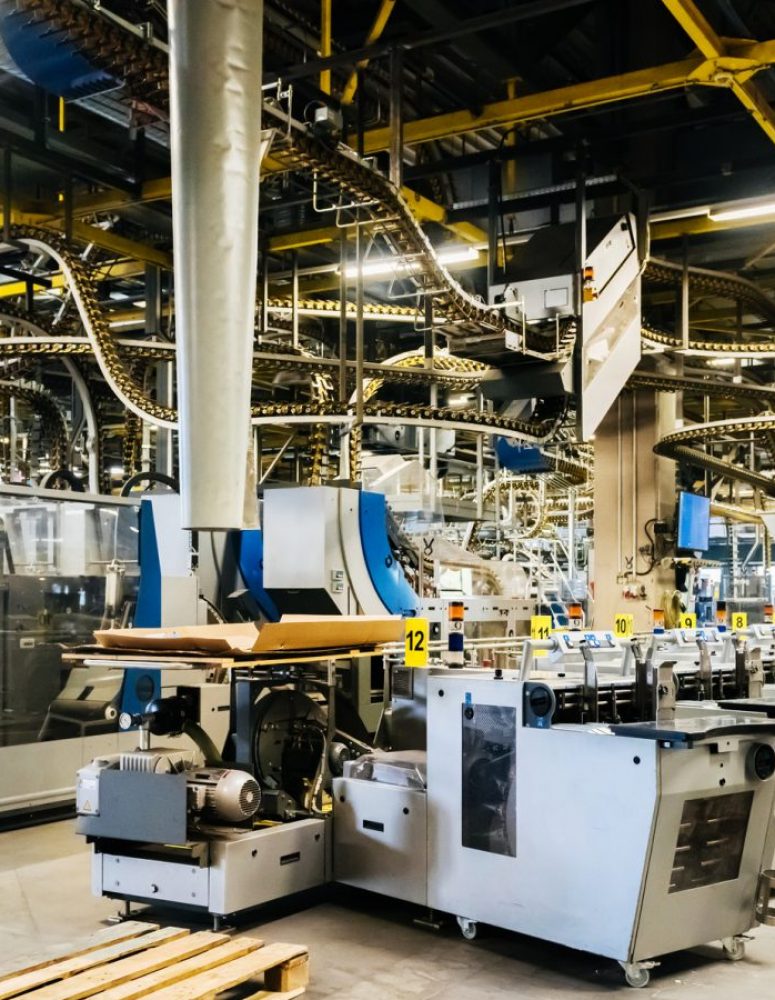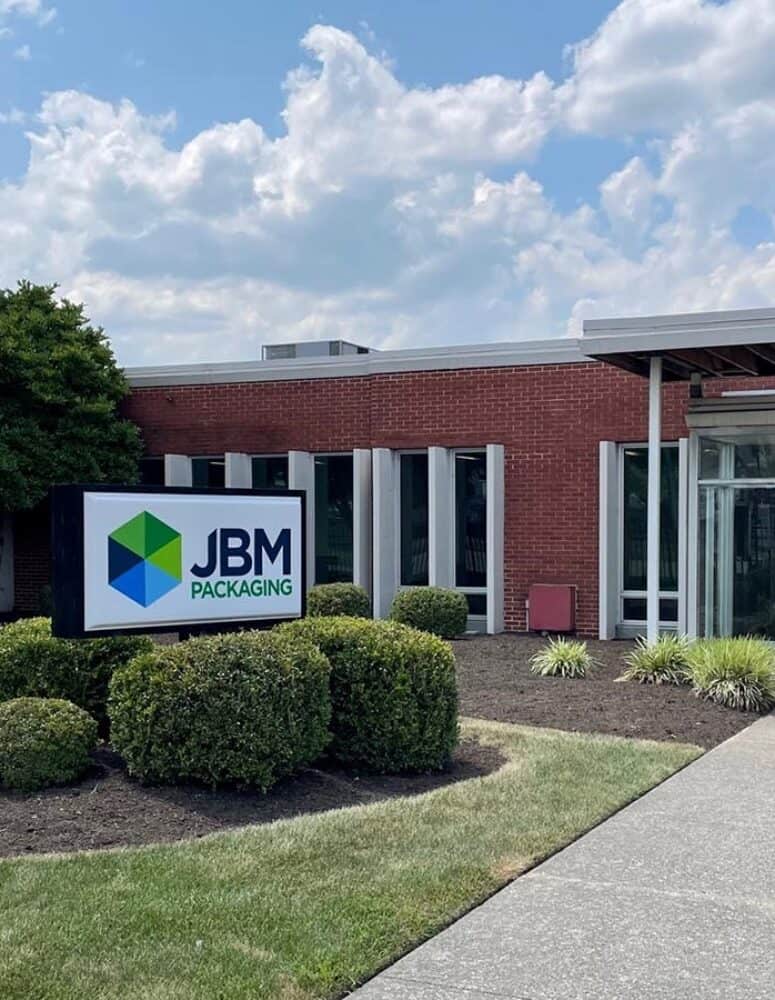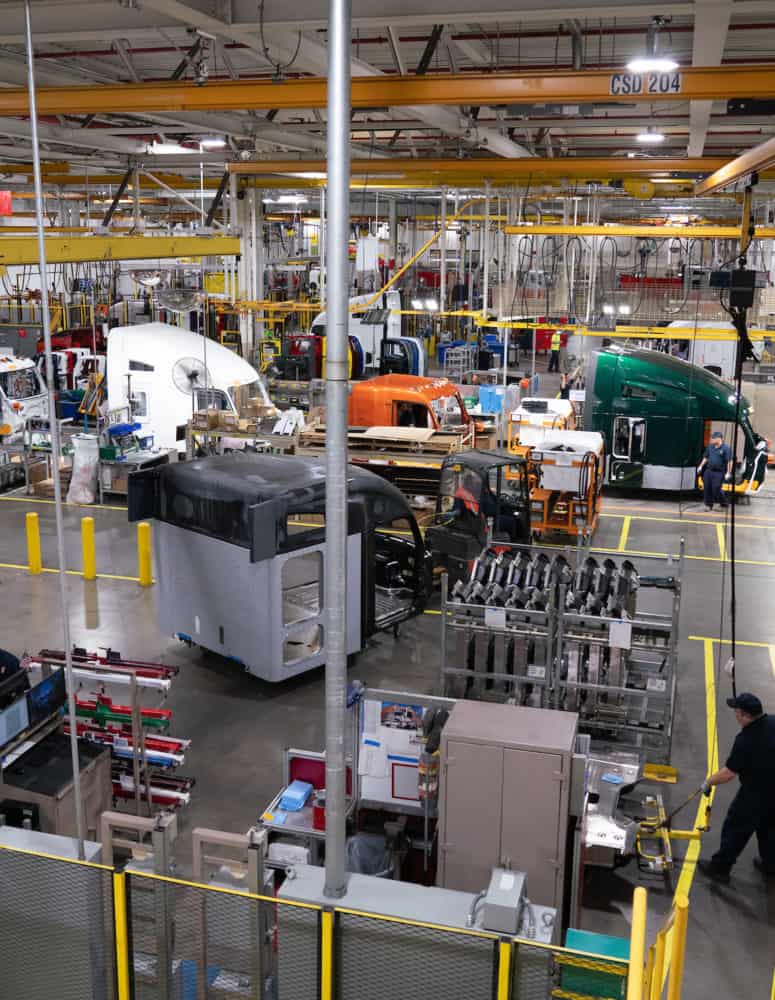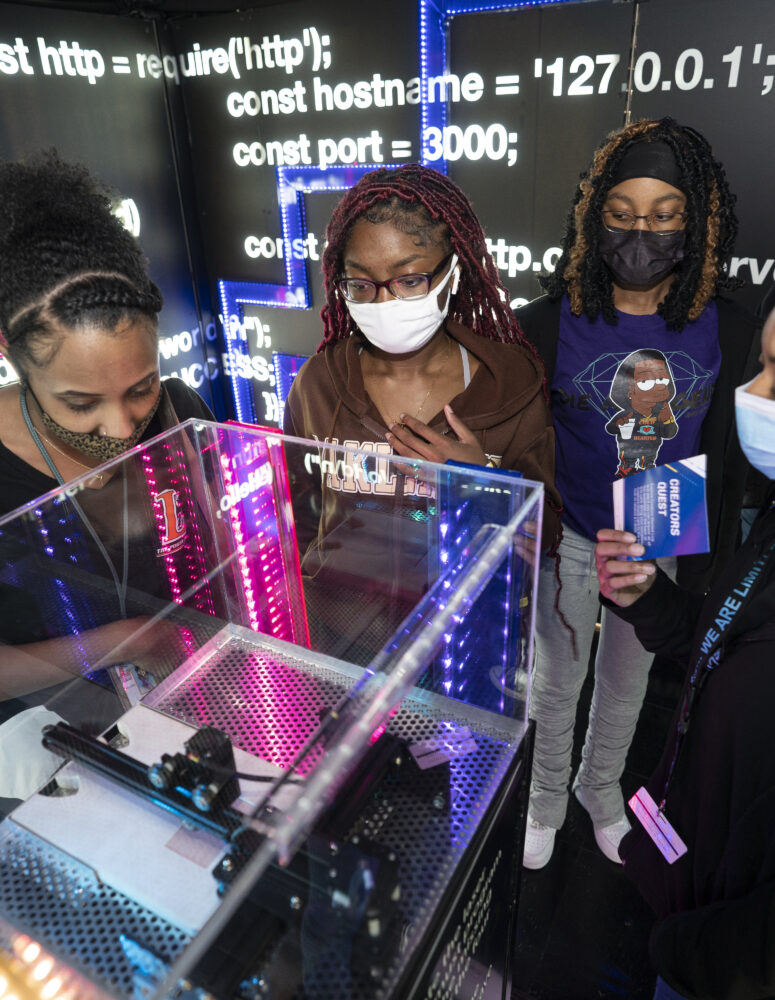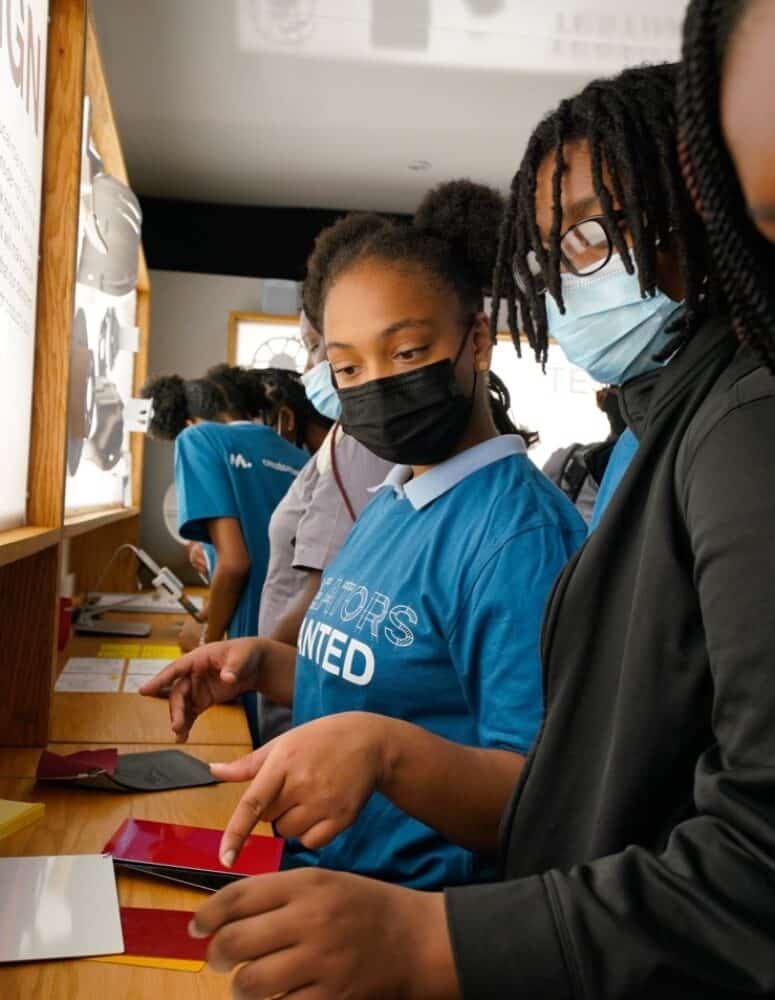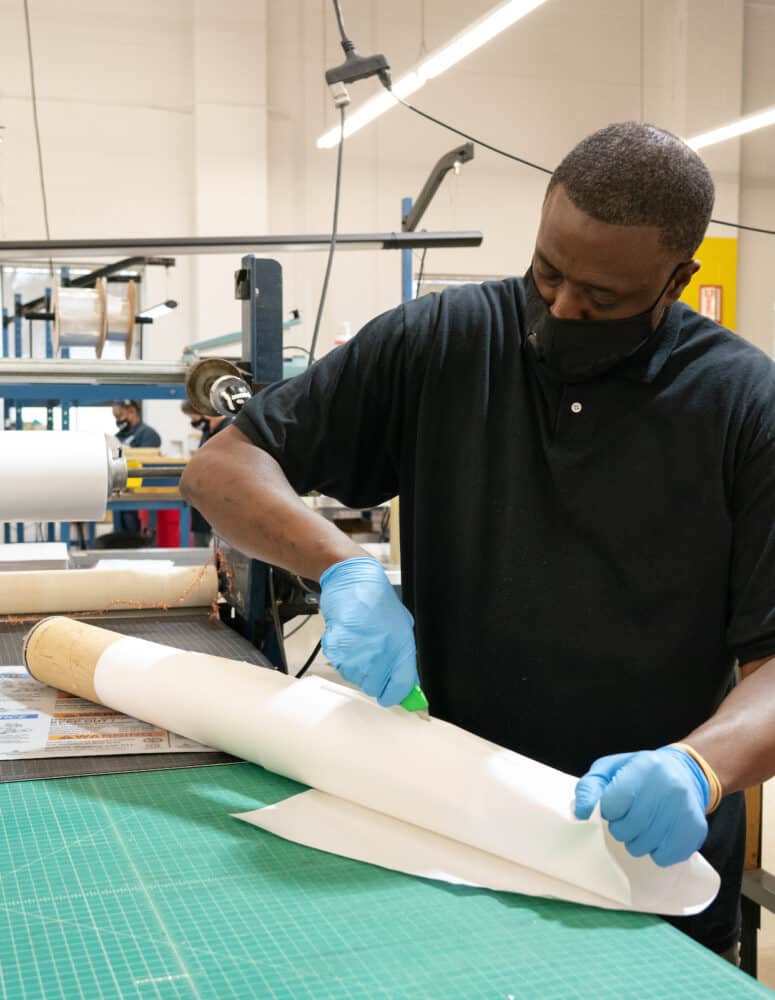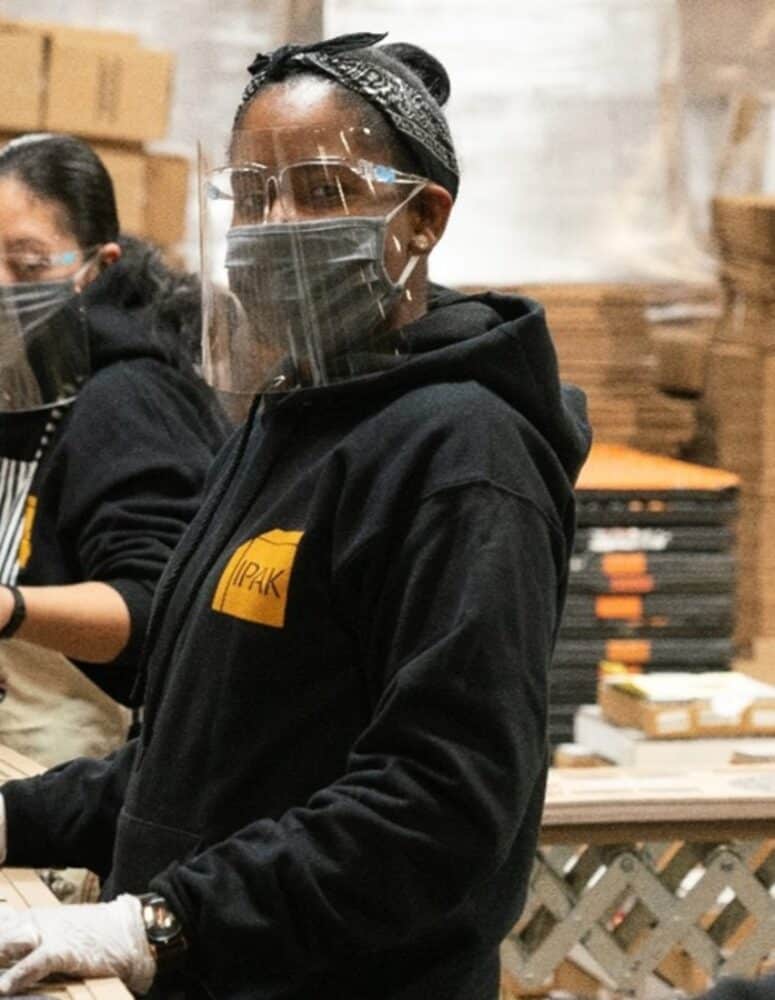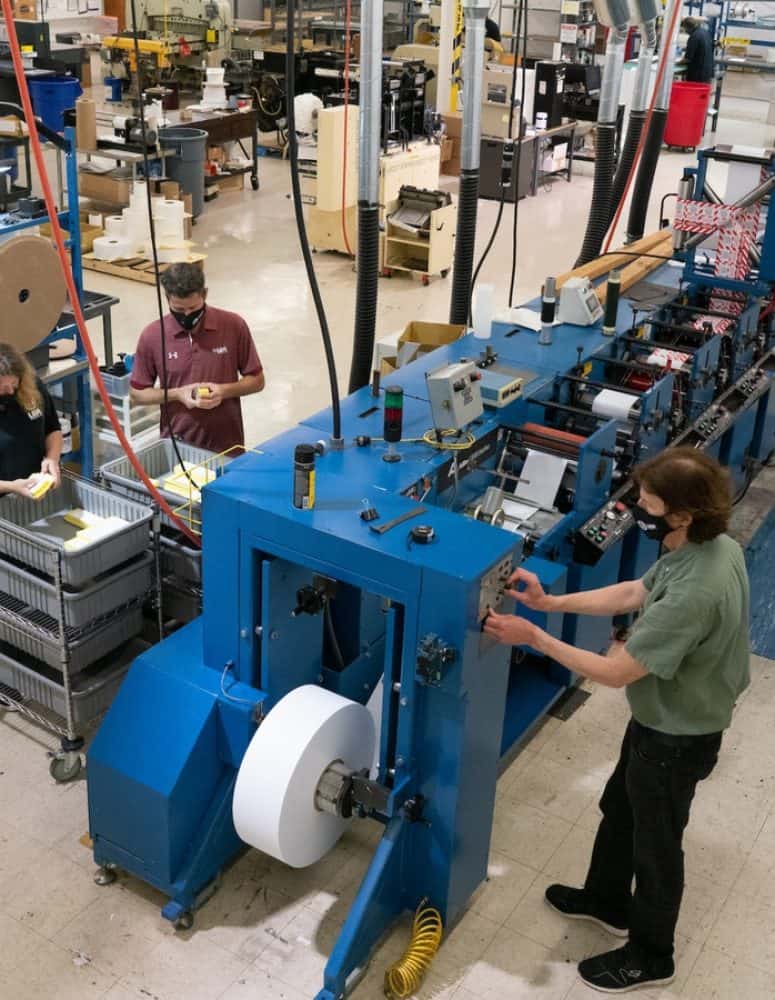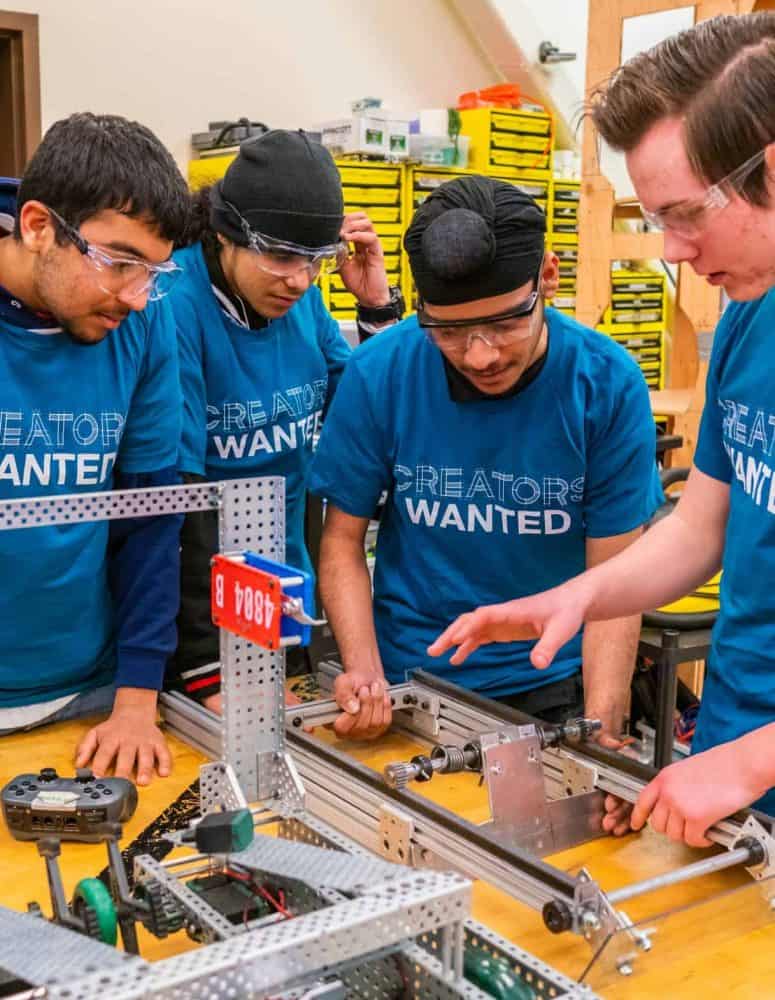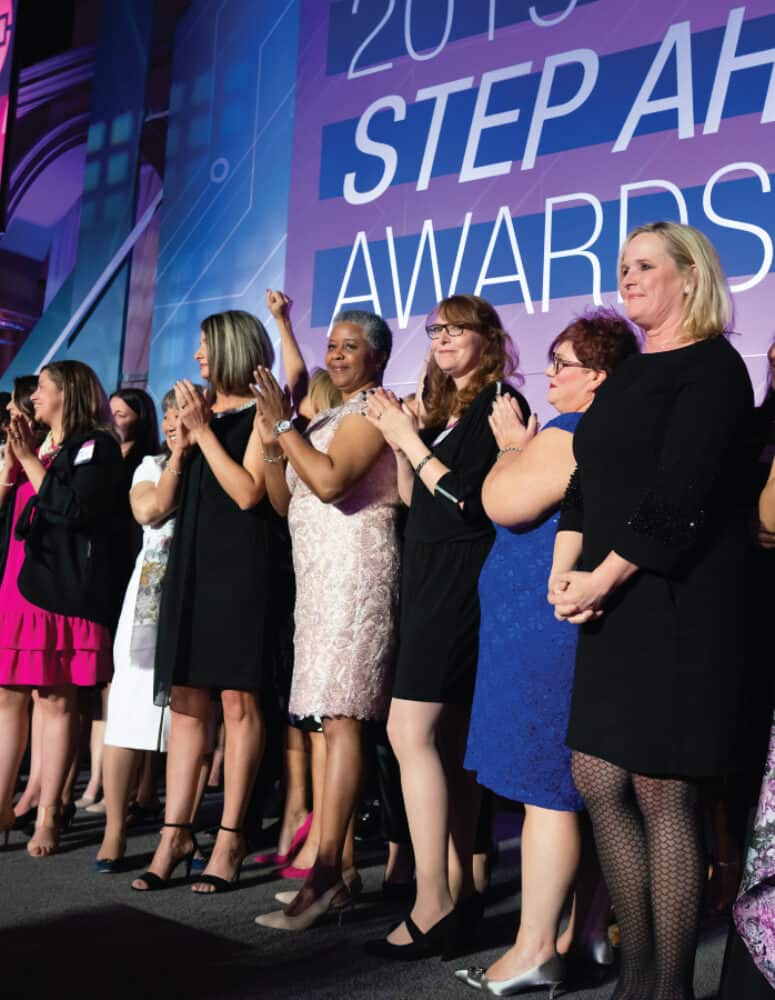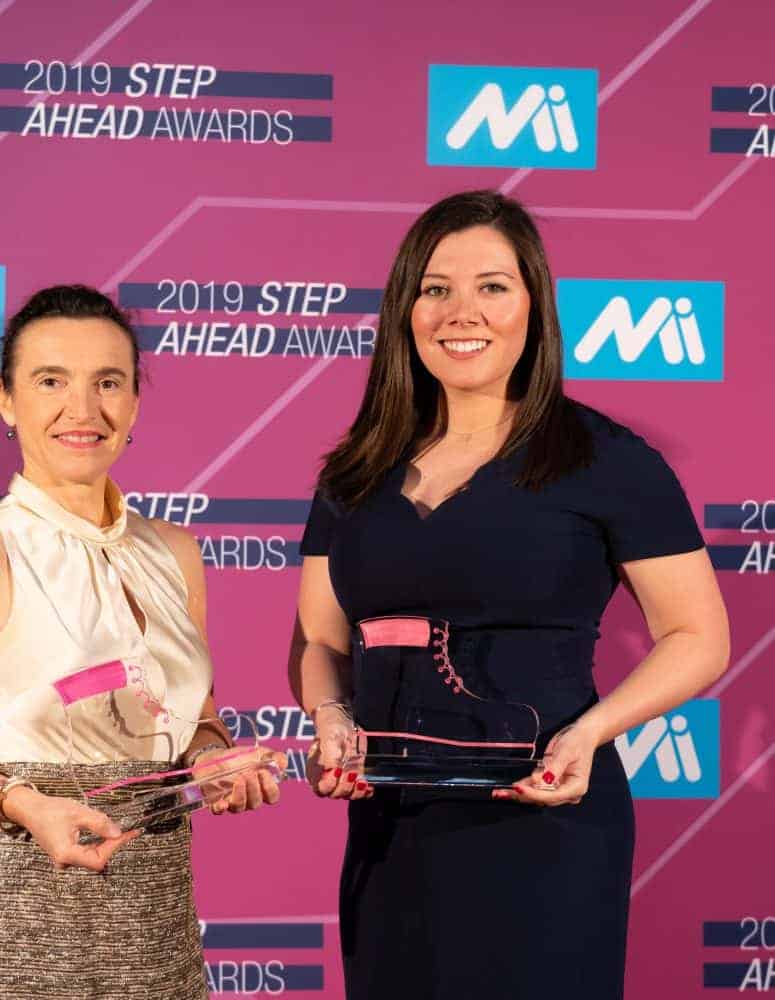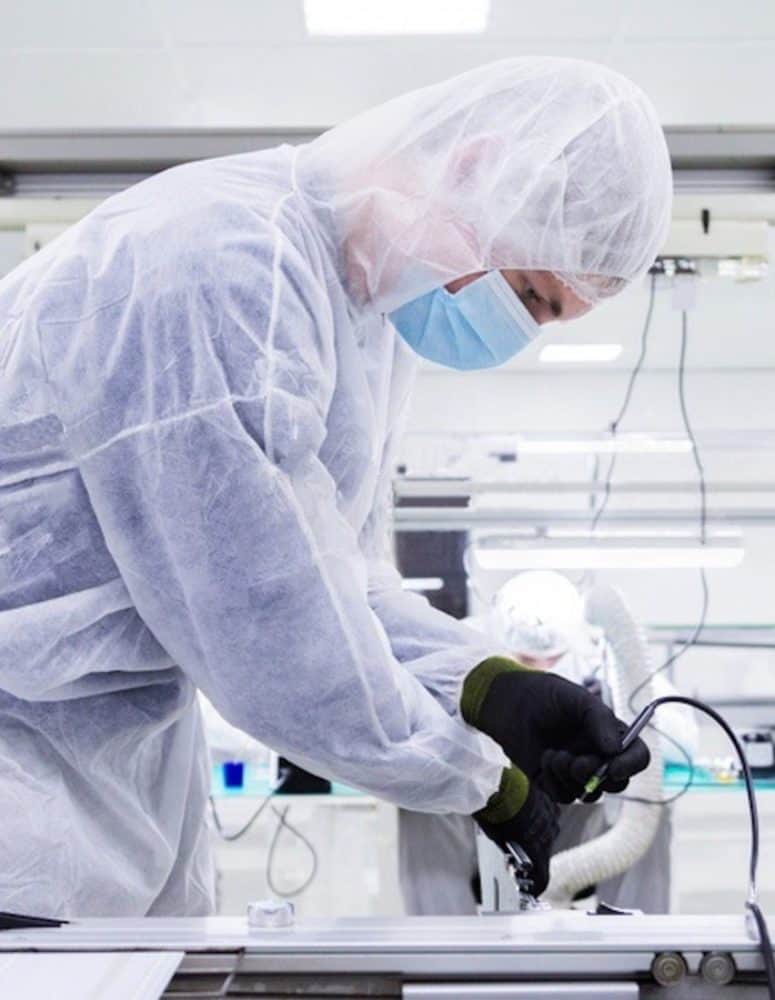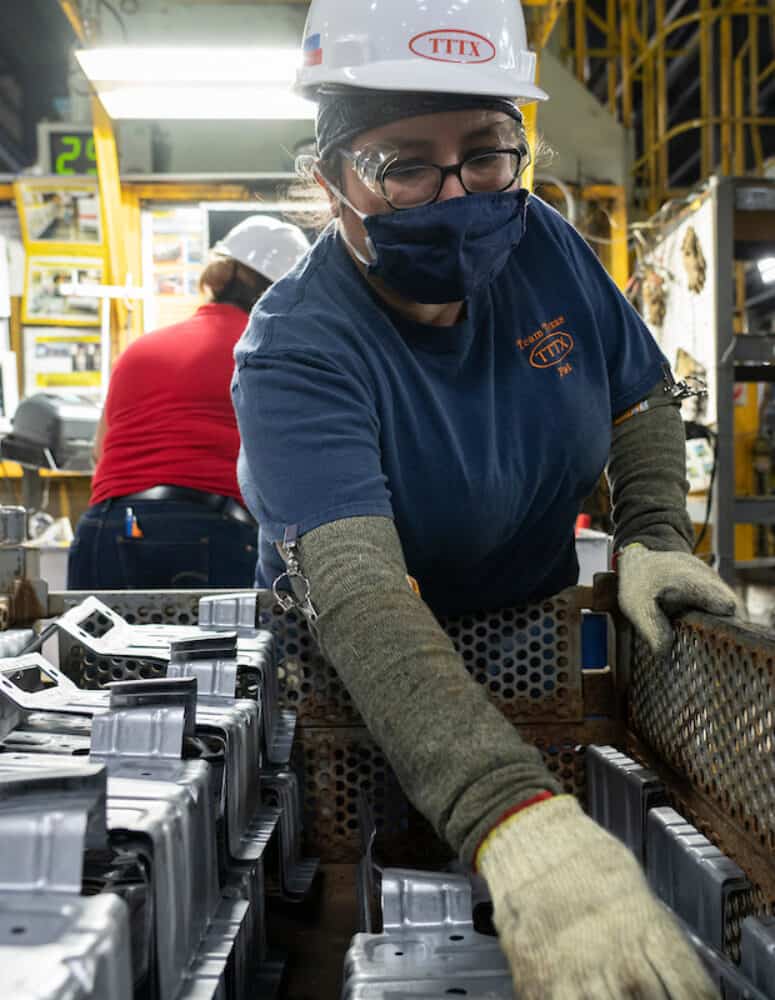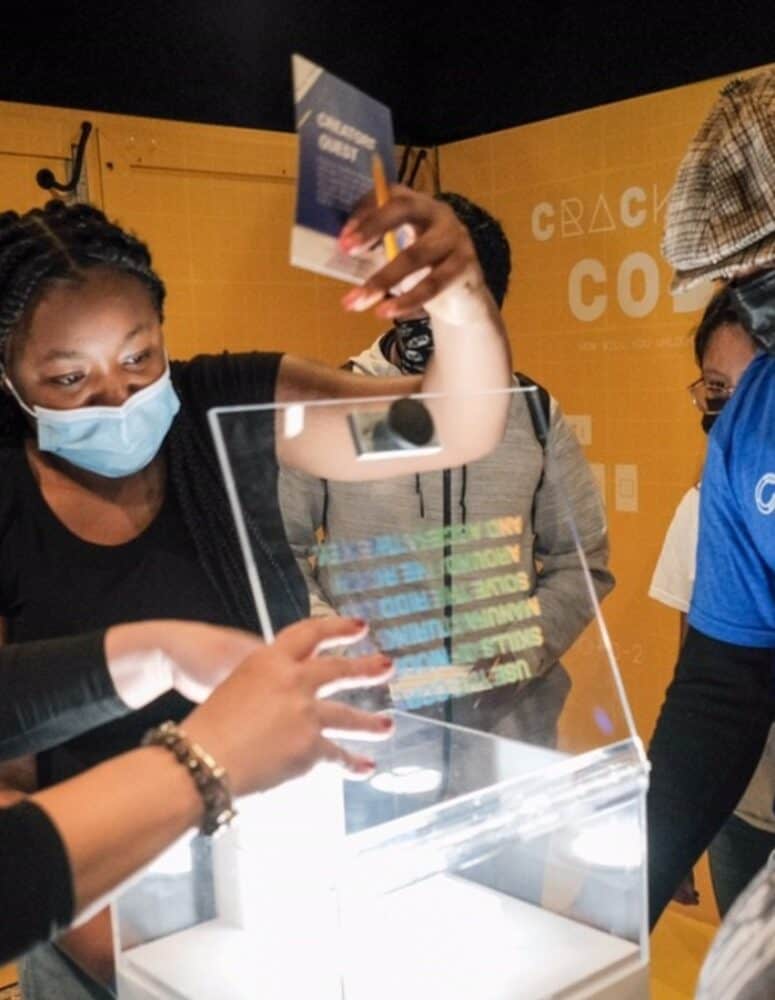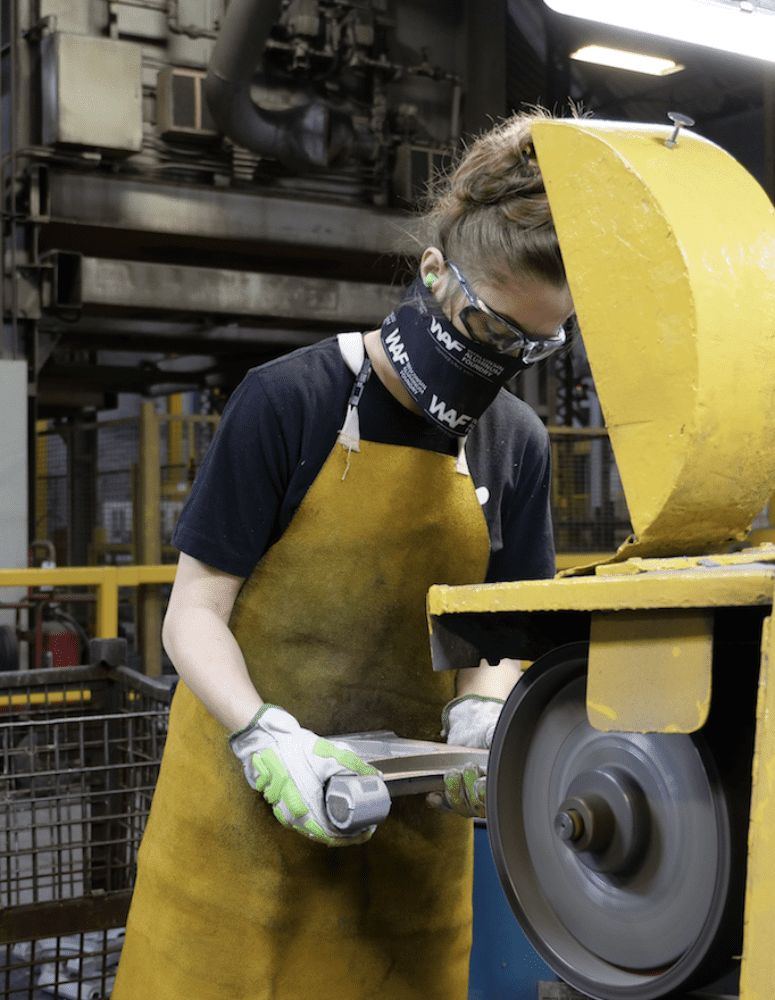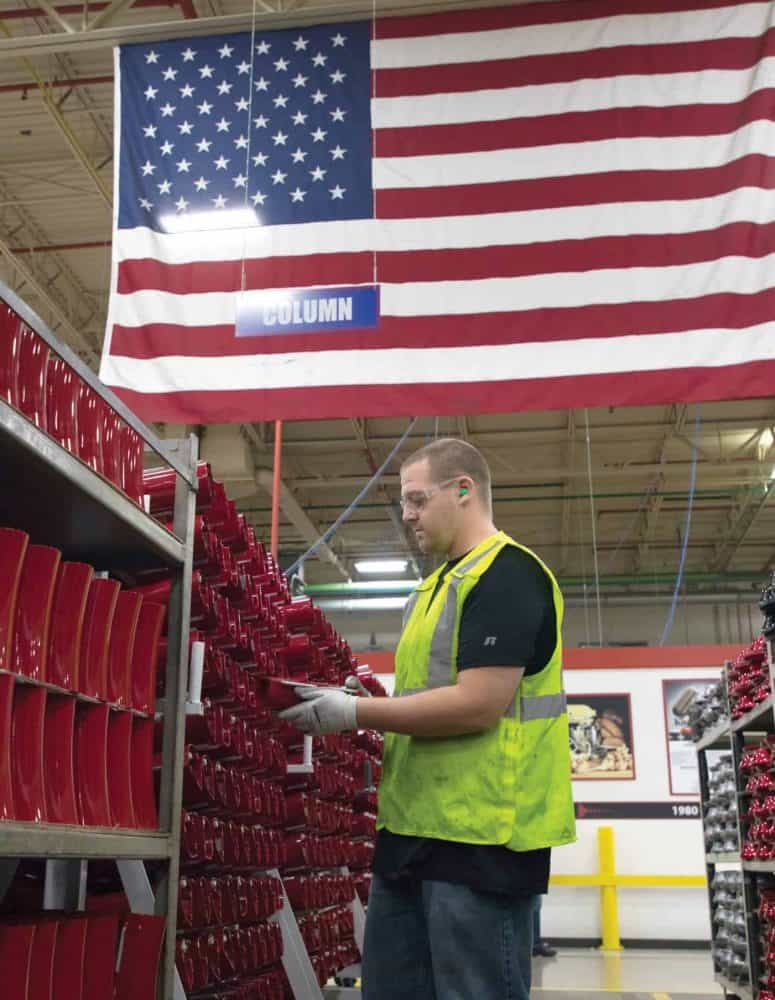Spotlight on Scottsdale: Creators Wanted Comes to Arizona
Get the Latest News
Get involved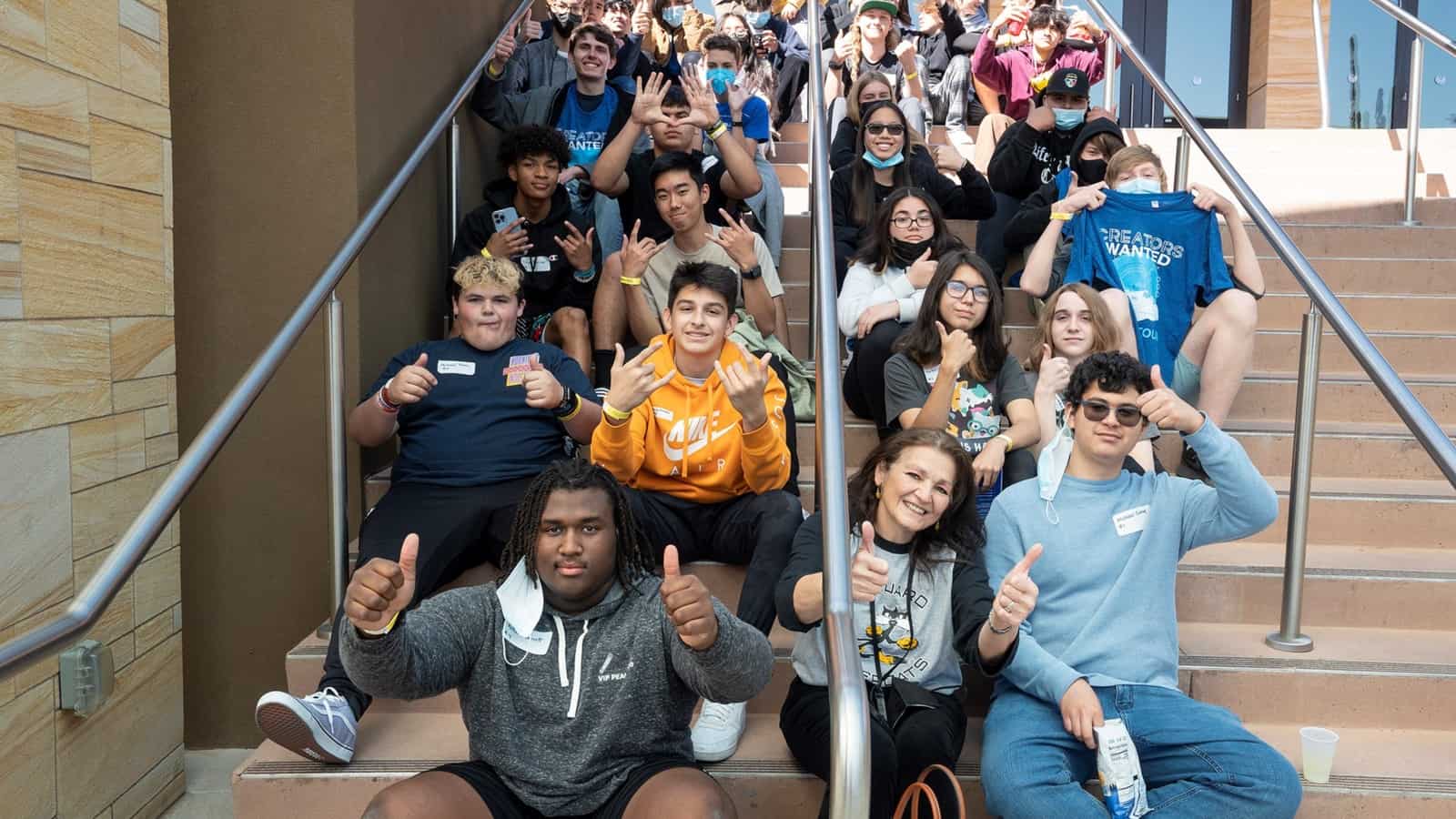
It’s back! Following a four-month break, the award-winning Creators Wanted Live Tour hit Scottsdale, Arizona, this week as manufacturers gathered nearby for the NAM board meeting. The attendee response: pure excitement.
Having a blast: Hundreds of manufacturing leaders and teens from the Scottsdale Unified School District and Phoenix-area YMCA chapters attended the Creators Wanted tour stop.
- Students spent time “racing to the future” in the immersive mobile experience, exploring the information hubs and exhibits by FactoryFix, Benchmark and Thermo Fisher Scientific, meeting and chatting with Maryland Gov. Larry Hogan and more.

Welcome news: The mobile experience, a project of the NAM and its workforce development and education partner The Manufacturing Institute, shared some big news during its stop in Arizona: the president, CEO and owner of Creators Wanted sponsor Nephron Pharmaceuticals Corporation, Lou Kennedy, committed to contribute and raise $1 million for the member-driven initiative to inspire the next generation of manufacturers.
- In recognition of Kennedy’s exceptional leadership in manufacturing, the NAM presented her with the Manufacturing Icon Award.
Big impact: The tour stop in Scottsdale resulted in 25,000 new student, emerging-worker and career-mentor email subscribers—all individuals who will help manufacturers fill the talent pipeline.
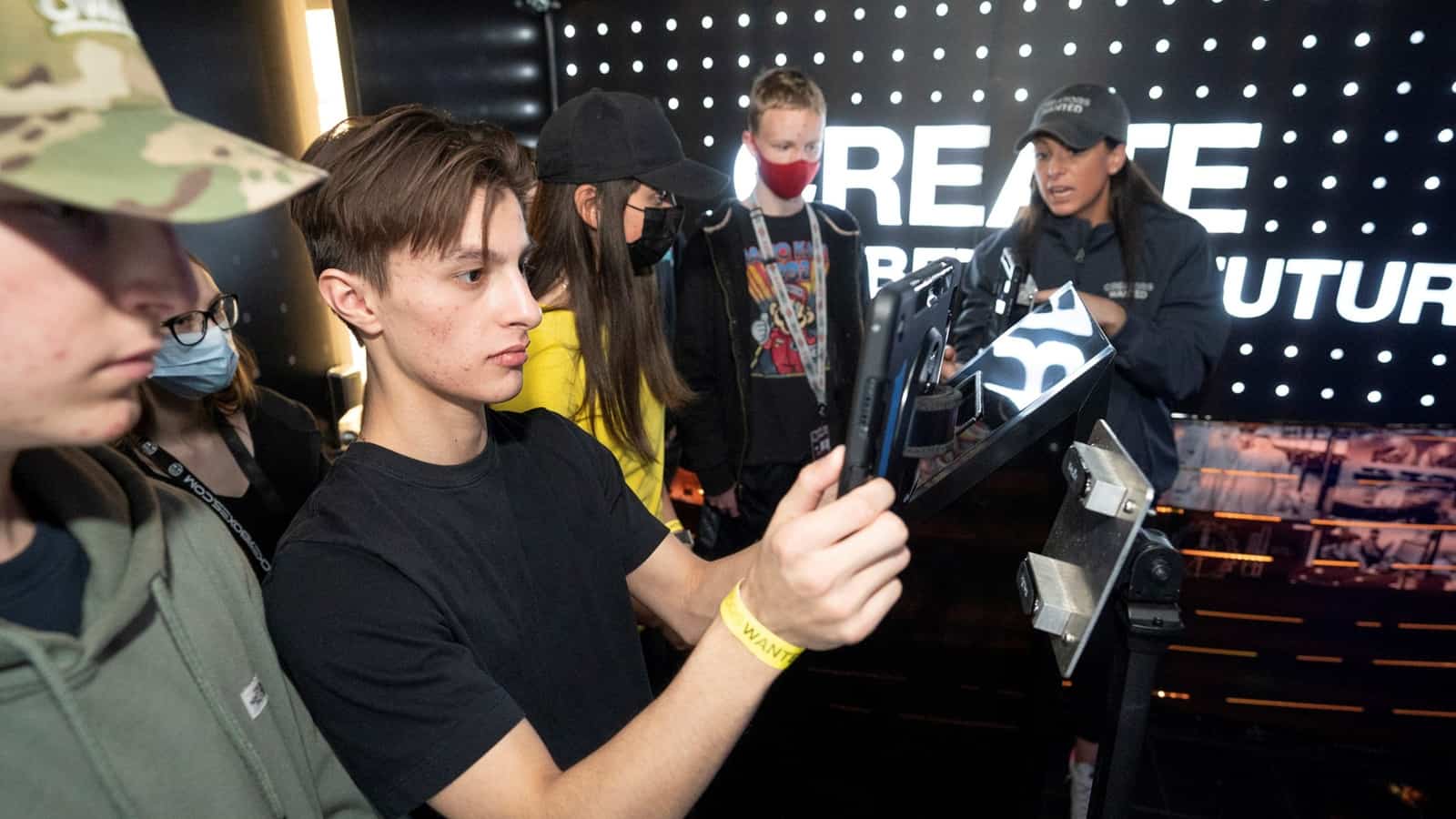
CNBC coverage: Snap-on Incorporated Chairman and CEO and NAM Executive Committee member Nick Pinchuk went on “Squawk on the Street” Tuesday to talk about Creators Wanted and strengthening the supply chain. NAM President and CEO Jay Timmons talked to CNBC the same day.
- “One of the reasons I’m here with the National Association of Manufacturers is because right behind me is our initiative to help fill the skills gap in manufacturing,” Pinchuk said on the ground in Arizona. “One of the problems is [people] view manufacturing as something that other people’s kids do. Well, this mobile interactive unit right behind me is a big factor in that. … It tells you, ‘Boy, manufacturing is not dark, dumb and dirty, as some people think. It’s a cool place to be.’”
- Timmons told CNBC he sees more manufacturing returning to the U.S. from offshore—and that the industry will figure out how to overcome current challenges. “Manufacturers can rise to the solution,” he said. “We always do.”
Op-ed: Timmons penned an op-ed for The Arizona Republic in which he termed the next 10 years “a manufacturing decade.”
- Timmons wrote that for U.S. manufacturing to continue to make “game-changing advances that improve the quality of life for everybody,” Congress must move forward with pending “global competitiveness” legislation, restore “sensible [tax] incentives” that foster research and development and pass comprehensive immigration reform.
What’s next: Creators Wanted stops next in Freeport, Texas, beginning on April 25, presented by Dow. The campaign is also working to raise additional funding to sustain a fall tour in 2022.
Want to join Kennedy in broadening the reach of Creators Wanted? Email Creators Wanted Finance Director Barret Kedzior at [email protected].
Chroma Color Corp. Sees Big Reward in Second Chance Investment
Get the Latest News
Get involved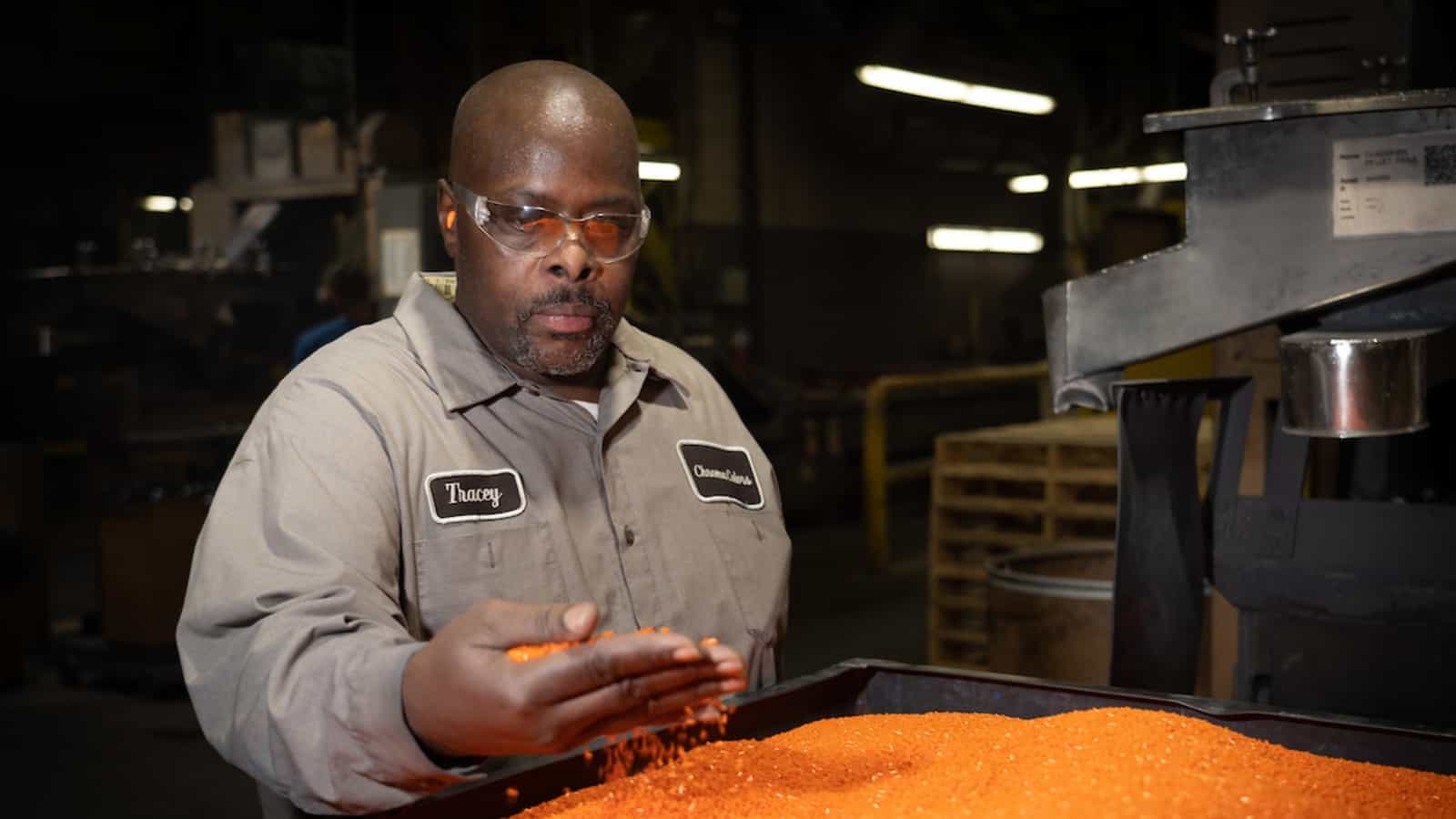
Manufacturers seeking smart, loyal, hard-working employees who are in it for the long haul need to be scouring online career sites and hitting the college job-fair scene with gusto—or do they? Chroma Color Corporation Vice Chairman Matt Barr would say no.
Unusual staff source: Chroma Color Corporation, a 55-year-old specialty color concentrate supplier with facilities in North Carolina, New Jersey, Massachusetts, Illinois and Ohio, has been recruiting talent from a minimum-security prison for more than three decades.
- “For many years, we had a great pipeline” of workers from the Piedmont Correctional Institution in Salisbury, North Carolina, Barr said. “While the program ended with COVID, we’ve decided to rebuild it now that COVID has subsided.”
Staying power: Amid a pan-industry skilled-labor shortage and unprecedentedly high job turnover, Chroma Color hopes for some relief in the form of more second chance employees, who come to the company through a partnership with the North Carolina Department of Public Safety.
- Of the hundreds of second chance individuals who have found jobs at the company since 1990, 90% are still there or have since retired, Barr said. And 100% of those who came on full time have stayed out of the corrections system.
- “We don’t have a lot of turnover,” Barr said. The second chance employees “are very smart and they’re passionate about turning their lives around. People don’t give them enough credit.”
Making the most of an opportunity: Barr attributes much of the low recidivism and turnover to the company’s policy of paying good wages and ensuring that workers have support systems in place.
- The program’s workers “have mentors, so they have contact with people who have gotten out,” Barr said. “They’ve got a model to look at on how to make it work.”
Successes: Stories of second chance employees who have risen among the ranks at Chroma Color and changed their lives completely are many.
- One employee, now the Salisbury plant manager, “did seven years for armed robbery,” Barr said. The man now oversees 25 employees and makes hiring decisions.
- Another second chance staff member, who has been with the company for 17 years, was able to purchase a house just six months after completing his prison sentence. “That doesn’t happen without something like this,” Barr said of the company’s program.
Advice for other manufacturers: Barr, who says the competition for second chance workers is heating up as other companies start to see the state corrections system as potential hiring grounds, thinks more manufacturers would do well to embrace second chance hiring—but only for the right reasons.
- “It’s not cheaper at all, but what you get is a unique workforce that’s dedicated and thankful and devoted and anxious to learn,” he said. “You need to go into it with your heart in the right place and have a genuine appreciation of people. We’ve all made mistakes. [Second chance employees’] mistakes were just a little more costly.”
Manufacturers Unveil Landmark Campaign to Close Gender Gap in Workforce
The Manufacturing Institute Launches “35x30” Initiative to Add 500,000 Women to Manufacturing Workforce by 2030
WASHINGTON, D.C. – The Manufacturing Institute, the workforce development and education partner of the National Association of Manufacturers, announced their “35×30” Women’s campaign, an ambitious, industry-wide effort to close the gender gap in manufacturing.
By 2030, the “35×30” campaign will work to close the skills and talent gap in manufacturing by adding half a million women to the industry, increasing women’s representation in manufacturing from 29% today to 35%. The campaign will also lead a nationwide movement designed to change perceptions by engaging face-to-face with emerging leaders and young women students, leveraging more than 1,000 women mentors and collaborating with manufacturers on strategies to attract and retain female talent and broaden the pipeline by supporting women throughout their education.
“For nine months in a row now, manufacturers have had more 800,000 open jobs, and we can’t make meaningful progress toward filling those jobs without closing the gender gap,” said MI President Carolyn Lee. “The 35×30 campaign is an unprecedented plan to strengthen our workforce and build the talent pipeline. We are thrilled to see the industry unite and recognize the power of women in the workforce. This initiative will help many women of all ages find their way into a successful, rewarding career in modern manufacturing, and I can think of no better day to make this announcement than on International Women’s Day.”
The biggest challenge facing manufacturers continues to be the growing workforce crisis. Studies show that manufacturers can close the skills gap by 50% by bringing 10% more women into the industry. Women account for about half of the U.S. labor force but represent less than one-third of the manufacturing workforce.
As part of the campaign, the MI announced an initial sponsorship of $250,000 from Arconic Foundation to support programs and activities in 2022 and beyond. The MI also recognized Stewards of the “35×30” campaign, stressing their support in narrowing the gender gap facing manufacturing in America.“35×30” Campaign Stewards include:
- Ryan Kish, President and Treasurer, Arconic Foundation
- Dee Dee Fultz, GM of Assembly, Harley-Davidson Motor Company
- Erika Peterman, Senior Vice President, Chemical Intermediates, North America, BASF
- Courtney Silver, President, Ketchie Inc
- Keira Lombardo, Chief Administrative Officer, Smithfield Foods
The “35×30” campaign will add to the MI’s ongoing work to bring women into the manufacturing workforce. Launched in 2012, the STEP Women’s Initiative is the nation’s marquee program to close the gender gap in manufacturing. STEP consists of the STEP Ahead Awards and professional leadership development program as well as regional STEP Forward events throughout the year. The initiative works to foster a 21st-century manufacturing workforce by elevating and inspiring women in the manufacturing industry through recognition, research and leadership, as well as by motivating alumnae to pay it forward by mentoring the next generation. Click here to learn more about the “35 x 30” campaign.
-The MI-
The MI grows and supports the manufacturing industry’s skilled workers for the advancement of modern manufacturing. The MI’s diverse initiatives support all workers in America, including women, veterans and students, through skills training programs, community building and the advancement of their career in manufacturing. As the workforce development and education partner of the NAM, the MI is a trusted adviser to manufacturers, equipping them with resources necessary to solve the industry’s toughest challenges. For more information on the MI, please visit www.themanufacturinginstitute.org.
State of Manufacturing: Resilient
Get the Latest News
Get involved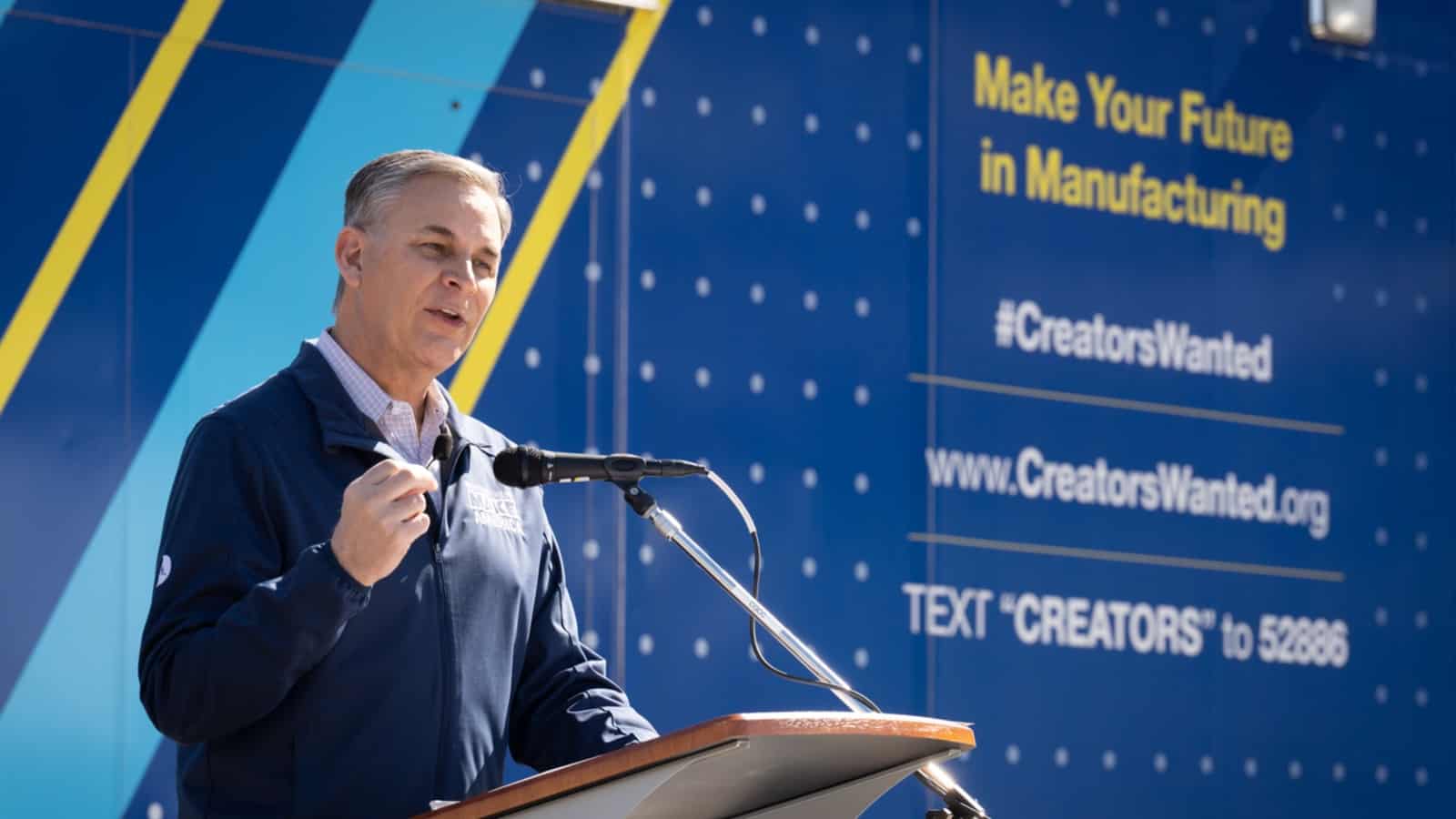
Workforce inspiration, COVID-19 safety, sound legislative policy, tax reform and democracy—these were the main themes NAM President and CEO Jay Timmons discussed during the NAM’s State of Manufacturing address Thursday at Chandler-Gilbert Community College Williams Campus in Mesa, Arizona.
Inspiring the workforce of tomorrow: Manufacturing is a high-tech, fast-paced, well-paying place to work, Timmons told the audience as he stood before the Creators Wanted Tour Live mobile experience, an initiative of the NAM and its workforce development and education partner, The Manufacturing Institute. But, he said, the industry has not been immune to the labor shortage.
- “For each of the past nine months, manufacturers in America have had more than 800,000 open jobs in our industry—800,000 chances to launch a well-paying career,” Timmons told the audience of college students, teachers and staff, as well as local manufacturers. “In Arizona, there were more than 11,000 openings in just the first 45 days of 2022.”
- Yet the state of U.S. manufacturing is, Timmons announced, resilient. “There’s hardly ever been more opportunities for future manufacturing workers. Innovators. Designers. Technicians. Creators. We’re a $2.57 trillion industry, with more than 12.5 million workers and counting. And the vast majority of manufacturing leaders say they are optimistic about the future.”
Getting policy right: Timmons also talked about the policy landscape and stressed the need for lawmakers to enact robust supply-chain, immigration-reform and competitiveness measures.
- “If we’re really going to outcompete China and other countries, then we need Congress to finish up the ‘global competitiveness bill’ they’re working on and get it to the president,” Timmons said.
- He added that coming legislation must include measures to bolster supply-chain resilience, combat goods counterfeiting and increase domestic semiconductor manufacturing.
“Rocket fuel” required: Following the passage of tax reform in 2017—which Timmons called “rocket fuel for our economy”—manufacturers have “kept our promises to raise wages, hire more workers and invest in our communities,” he said.
- “For more than a year, some politicians have tried to raise taxes on manufacturers,” Timmons said. “They tried it with the COVID-19 relief bill. They tried it with infrastructure. They tried it with Build Back Better. And three times, manufacturers said don’t do it. And we won. The voices of moderation in the Senate prevailed.”
- “But if tax reform is repealed or punitive measures, such as the ‘book tax,’ are passed, the U.S. economy will suffer,” Timmons said.
Safeguarding values: America’s values and institutions are what have made manufacturing possible, Timmons said, and we must defend them from the threats they now face.
- “Today, America faces new threats to our democracy, including those threats from within,” Timmons said. “And once again, manufacturers stand proudly on the side of protecting and preserving American democracy and our constitutional republic.”
Media mentions: News of Timmons’ address was picked up by national outlets including POLITICO Pro’s Morning Trade and Fox Business, and an op-ed by Timmons ran on Cleveland.com.
Point of emphasis: “I’ve always believed, and the past two years have reinforced, that manufacturers are in the business of causes greater than self. From building the arsenal to win a world war decades ago, to pioneering the treatments to defeat today’s diseases and pandemics, we change the world,” Timmons underscored in the wrap-up of the address.
Read Timmons’ full remarks here. Learn more about the Creators Wanted campaign and encourage students in your networks to RSVP for its Scottsdale, Arizona, showcase on March 7 here.
Engaging Historically Black Colleges and Universities in the Talent Search: Tips for Manufacturers

For Tonya Byrd, there was never any great conundrum about where to attend college.
No question: “I was raised in that HBCU mindset,” said the Howard University alumna and director of community engagement policy and local affairs for Dominion Energy. “It was not a question for me of where I wanted to matriculate and learn and grow.”
MI webinar: Byrd shared some of her own academic and professional experiences as she joined Intel’s Chris Ross for a recent Manufacturing Institute webinar on how manufacturers can best engage historically Black colleges and universities.
- Byrd and Ross, who lead HBCU engagement at their respective companies, agreed on three main strategies manufacturers can employ to bolster their diversity and inclusion work and attract African American talent in a tight labor market.
Build relationships: A manufacturer doesn’t have to have huge sums of money to successfully engage HBCUs and their students, Ross and Byrd said.
- “We’re finding there are a lot of ways you make … meaningful pathways happen” between HBCUs and manufacturers, Ross said. “And it doesn’t require big paychecks to happen. We’re looking at, ‘Can we just set up some Zoom calls or Teams calls where we bring in some of our engineers … and they talk about what it’s like to be an engineer at Intel?’”
- Headquartered in Richmond, Virginia, Dominion Energy sits strategically close to many HBCUs on the Atlantic coast—but location isn’t everything, Byrd said. Dominion has African American resource groups through which it creates mentorships with students at local HBCUs, and this is something other manufacturers can replicate no matter where they may be located, she said.
- “We’re building [those] relationships by offering what we have as well as listening,” she said. “It’s, ‘What do you need?’”
- Dominion has also reached out to graduate and Ph.D. students at Howard University’s Department of Economics for third-party, independent research purposes. “Students get cases studies and get to know the company” that way, she said.
Leverage alumni: Those who attended HBCUs and are now in the workforce are frequently a manufacturer’s best bet when it comes to recruitment.
- Intel has relied on HBCU-alumni employees to help forge relationships with key schools, Ross said. “That’s one way to start with the engagement.”
- For Dominion, alumni are a primary connector to HBCUs. “Alumni and their networks” are key to keeping open communication between the company and the schools, Byrd said.
Be a meaningful place to work: Manufacturers should recognize that younger generations of workers and those coming out of college now want something different from employers than previous generations.
- “There’s a different mindset in [those] coming into the workforce now,” Ross said. “They care about environmental sustainability, they care about their communities, they want to stay local.” To that end, manufacturers should ensure they have sound corporate social responsibility programs in place and “be vocal about your shared values.”
- The opportunities to guest lecture and mentor students at their alma maters seem to “really be driving employee engagement” and retention, Byrd said. Employees “find that rewarding. They get to give back to their community.”
- In addition, manufacturers should be vocal about their support of justice, Byrd continued, adding that Dominion leadership came out with a statement condemning the murder of George Floyd soon after the event. That C-suite move had a profound impact on employees, Byrd said.
The last word: Manufacturers of all sizes and types can be successful at HBCU engagement—and it will be well worth their time. “The HBCUs are gems,” Byrd said. “They are pillars in our community. What better place to look to grow innovation?”
Lincoln Electric Invests in Workforce and the Future
Get the Latest News
Get involved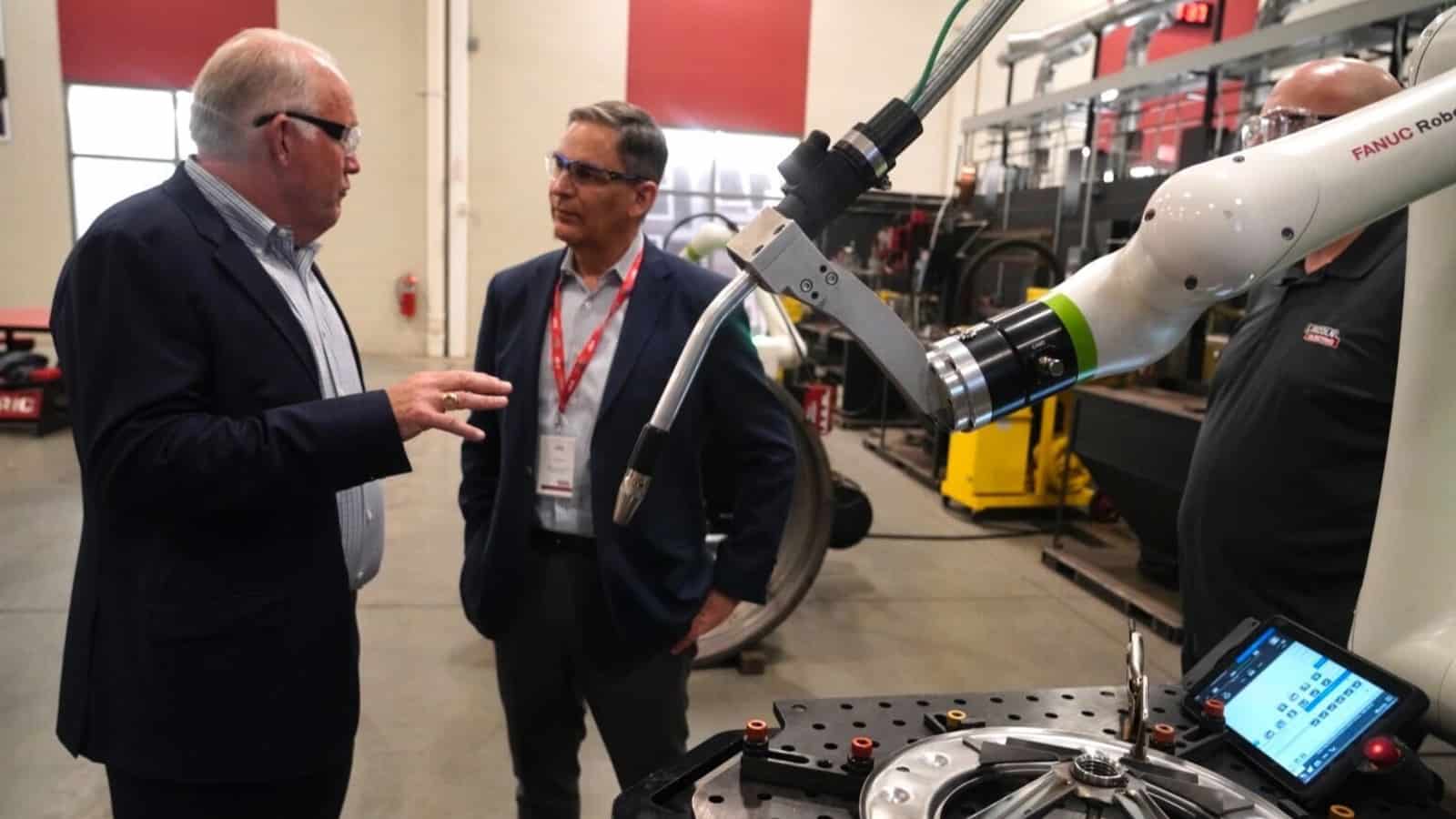
Ahead of Thursday’s 2022 NAM State of Manufacturing Address, NAM President and CEO Jay Timmons was in Cleveland, Ohio, where he visited Lincoln Electric—a global manufacturer of welding products and equipment—to discuss the state of the industry.
Trailblazing training: At Lincoln Electric, they’re not just operating the longest continually running welding school in the world. They’re also offering cutting-edge tools for new students and making sure that the people who come through their training center are well prepared for the world of tomorrow.
Welding Technology and Training Center: At the WTTC, participants learn in a $30 million state-of-the-art facility designed to help train students for new careers and to upskill welders to take on new roles and responsibilities.
Virtual Reality Welding Solutions: Not all training needs to happen in the real world. The VRTEX® virtual reality arc welding trainers offer high-tech learning solutions for students and professionals alike, along with learning tools designed specifically for educators.
A helping (bionic) hand: Finding skilled welders can be tough. However, plenty of jobs in the welding industry don’t come with a steep learning curve. To help expand their workforce and improve productivity and efficiency at their facilities, Lincoln Electric has invested in collaborative robots that offer easy automated assistance with a simple, user-friendly interface that non-welding professionals can use.
Strengthening supply chains: One challenge for manufacturers throughout the pandemic has been the burden placed on international supply chains, which has caused long delays and uncertainty around shipping. Lincoln Electric has the only wire-based additive manufacturing factory in the United States for 3D-printing large metal-based industrial components, replacement parts, tooling and molds—products that have traditionally been cast and sourced internationally. Through their innovation and domestic production, they can create parts in days or weeks that would otherwise take six months or more to build.
Lincoln’s line: “We are pleased to welcome Jay and the NAM team to Lincoln Electric and have the opportunity to showcase our industry-leading workforce training and development solutions, as well as innovative automation and large-scale additive solutions that address the manufacturing sector’s need for added operational capacity to drive growth and shorter, more reliable supply chains,” said Lincoln Electric Chairman, President and Chief Executive Officer Chris Mapes.
Our take: “From the management that has built state-of-the-art training facilities to the employees who have used that training to build a rewarding career, this is an example of a team that is more than the sum of its parts,” said Timmons. “It was energizing to see all the incredible work that Lincoln Electric is doing to invest in its workforce and the wider community.”
More stops: The State of Manufacturing visit is reaching other Cleveland-area manufacturers including Jergens, Synthomer and STERIS Corporation.
Tune in: The State of Manufacturing address is this Thursday! Tune in here.
2022 STEP Ahead Award Winners Announced
Get the Latest News
Get involved
Word is out – the recipients of this year’s STEP Ahead Awards have been announced.
What’s happening: Bestowed each year by the Manufacturing Institute, the NAM’s workforce development partner, the STEP Ahead Awards recognize outstanding women in the fields of science, technology, engineering and production (STEP). This year marks the honor’s 10th anniversary.
Why it matters: “The STEP Ahead Awards are central to the industry’s efforts to recognize and empower women,” said MI President Carolyn Lee. “Manufacturing is averaging more than 800,000 open jobs a month in the past year, and we can’t close that gap without closing the gender gap.”
- Recipients “serve as role models and have their own multiplier effect on the number of women in the workforce, paying it forward to help others find their way into a successful, rewarding career in modern manufacturing,” Lee said.
- Agreed 2022 STEP Ahead Chair Denise Rutherford: “The 2022 STEP Ahead Honorees and Emerging Leaders are excellent representatives of the exciting opportunities available in manufacturing. These remarkable women and the leadership they show help inspire the next generation of female leaders to consider careers in manufacturing.”
Gala to follow: The 130 recipients of the 2022 awards will be honored at an in-person Aril 28 gala in Washington.
See the full list of 2022 award recipients here.
“A Driver Rather Than a ‘Retirer’ of Employment”: Technology Supports Workers
Get the Latest News
Get involved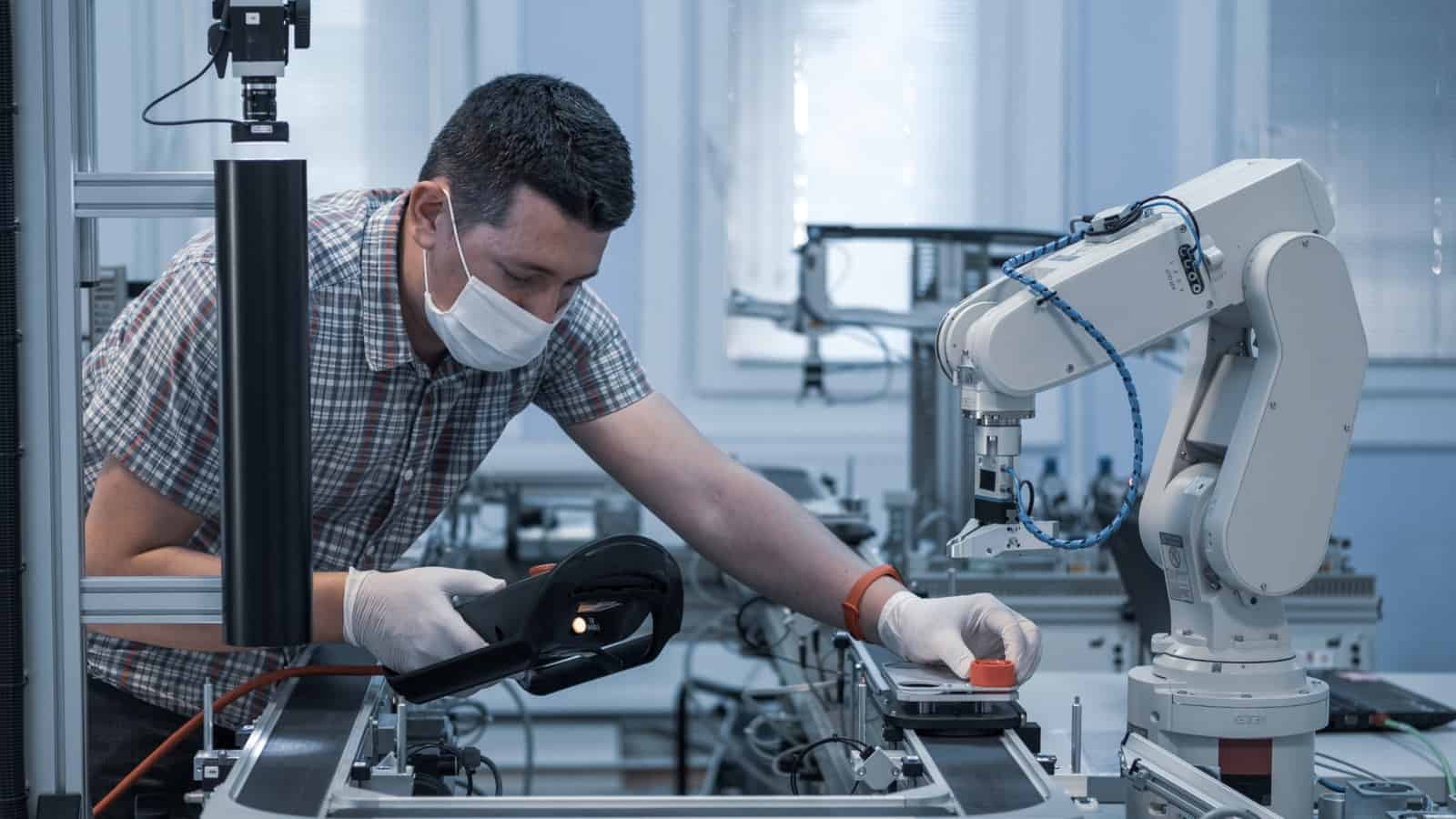
Manufacturers largely agree that technology will help workers, not displace them, speakers said at the Manufacturing Leadership Council’s recent virtual event, “M2030 Visions of the Future: Reflections on New Orleans.”
New Orleans readout: The webinar, which featured a panel of technology experts, was a recap of highlights from the MLC’s December 2021 Manufacturing in 2030 project event in New Orleans, which hundreds of manufacturers attended.
What the future holds: The recent online discussion was primarily about future technological trends in manufacturing, and three major themes emerged: Completely “lights-out” manufacturing (i.e., totally automated) is not a likely near-term reality for manufacturing; upskilling and reskilling will be crucial in attaining syncopation between employees and robots; and most manufacturers have some ways to go to achieve digital maturity.
Lights out? Try lights dimmed: There is a misconception that robotics, artificial intelligence and machine learning will replace human employees on the shop floor. The reality is that they all do best together.
- “I view it more as a ‘dimmer switch’ than ‘lights out,’ and the level to which you can dim depends on the kind of manufacturing you do,” said West Monroe Senior Manager of Consumer and Industrial Practice Alex Jay. Particularly when it comes to “complex materials, [manufacturers will] need a nuanced touch,” which will require more, not less, human interaction.
- “There will be a dimmer switch, a natural limit to how far you would automate,” said Infor Senior Vice President of International Strategy Andrew Kinder. “In the next eight years, we will see more use of technology on the plant floor. Is this a concern for employment? I think the World Economic Forum put that to bed when they said … technology will create 12 million more jobs than it will ever destroy.”
- EY Principal of Strategy and Transactions Rosco Newsom agreed. “[Manufacturers] don’t see ‘lights out’ happening in the near future.”
Upskilling and reskilling: The increased use of Manufacturing 4.0 technologies on the shop floor will only increase the need for skilled talent, the panelists agreed.
- First, “there is reskilling and upskilling required even to make those ‘lights out’” changes, said NTT Data Senior Director of Manufacturing Industry Solutions Baskar Radhakrishnan.
- Complex materials that need nuanced touch and geometric dimensioning and tolerancing “will need more human interaction,” not less, Jay said.
Maturity not yet reached: As was evidenced by questions from the webinar audience and comments from manufacturers during the New Orleans event, many manufacturers could use guidance when it comes to using more technology.
- For smaller manufacturers wondering where to start implementing Manufacturing 4.0, look to “labor-intensive, repetitive tasks,” Radhakrishnan said. “That’s where you start.”
The last word: Robotics aren’t going to put anyone out of a job. As Kinder said, “Tech seems to be a driver rather than a ‘retirer’ of employment.”
How to Attract Workers
Get involved
Get involved
A record number of people quit their jobs in 2021, and companies are scrambling to find ways to attract new workers, according to CNN.
What’s happening: With almost 11 million open positions at the end of 2021, employers have begun “to sweeten their offerings in terms of benefits, pay and flexibility.”
Greater work flexibility: One of the perks that seems to be helping retain some workers is increased flexibility in work schedule, a finding in line with the results of a recent Manufacturing Institute–BKD study:
- Fifty-six percent of respondents “noted a need for increased worker flexibility, and roughly half had reevaluated what work could be done remotely where possible. With that, 41% said that their business was working to reengineer the production process with social distancing in mind.”
- The MI recently held a roundtable discussion on this very topic. Get a free recording of the webinar here.
Pre-job paid vacation: Workers are also responding favorably to paid time off—before they start a job.
- One “company started offering ‘pre-PTO’ that offers new hires a week of paid time off before their first day of work. … [It] created a task force that spoke with recruiters, current employees and candidates who had turned down offers at the firm, to come up with innovative ways to solve the hiring challenges. ‘Without a doubt, PTO-related new benefits were the most popular,’” the firm’s chief people officer said.
Quick offers, more cash: A health care provider has begun offering sign-on bonuses of up to $17,500 for particularly hard-to-fill remote jobs, and it gave every employee a 4% raise in 2021.
- Said the company’s executive vice president: “For many of our roles that don’t require licensure or certification … you show up, get a same-day offer and begin work the following Monday, if possible.”
The Direct Link Between Child Care and Women Workers
Get the Latest News
Get involved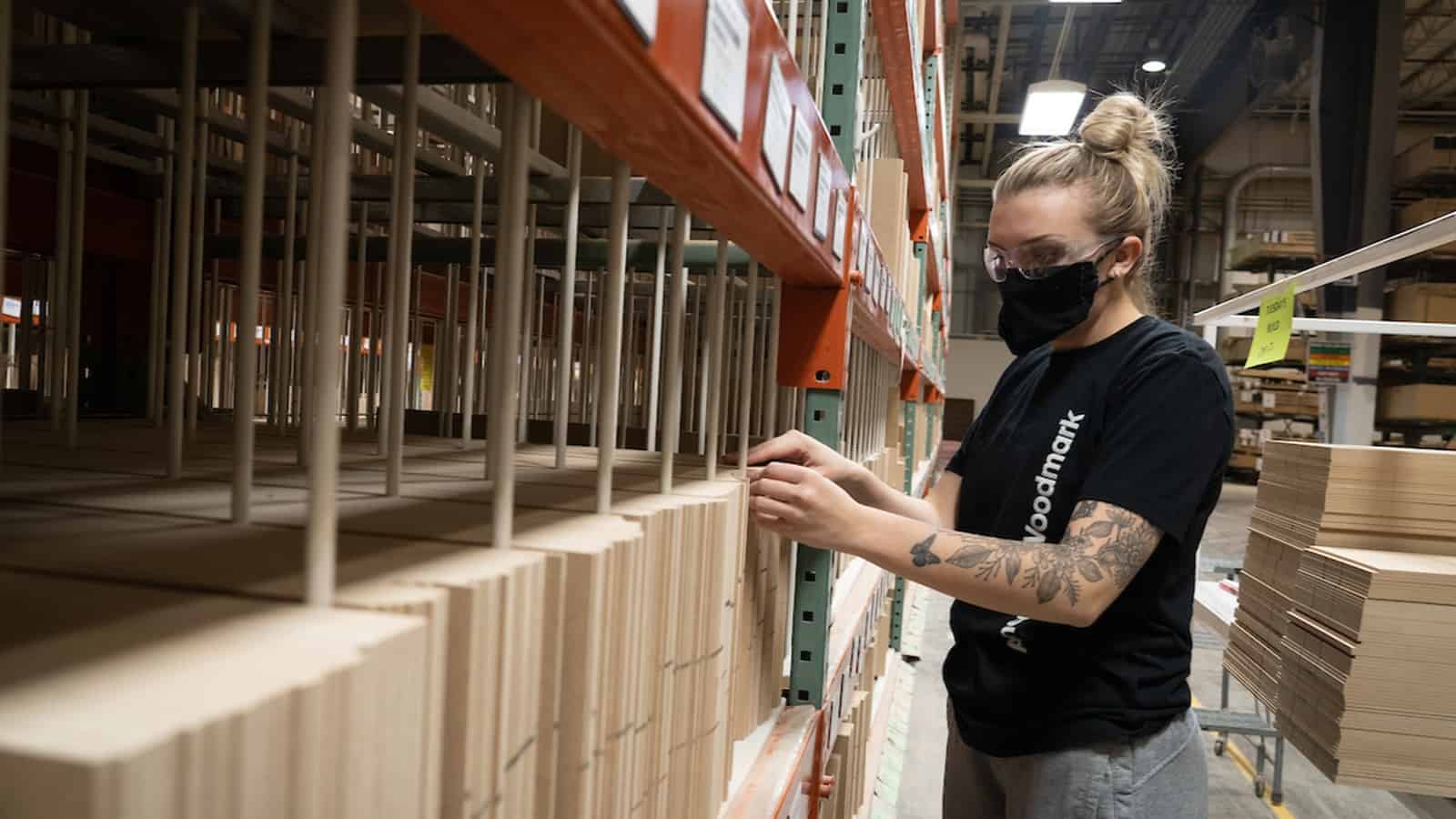
The gender gap in the Great Resignation is widest in states with the most child care disruptions, according to Axios and a report from payroll company Gusto.
What’s happening: “Nationally, 4.1% of women quit their jobs in January compared with 3.4% of men—a 0.7 percentage point difference. But in Maine and Rhode Island—where around 45% of families reported COVID-related child care disruptions in the Census Household Pulse Survey—the gender gap swelled to 1.7 percentage points, Gusto found.”
- “At the same time, in Missouri and Arizona—where less than 25% of households said child care was disrupted—the gender gap was close to zero.”
Why: Women still disproportionately shoulder responsibilities for child care and are also likelier than men to take on child care duties while working from home, according to Axios.
- In addition, “as omicron cases fall, schools are reopening. But many child care centers have closed down due to COVID pressures, like staff shortages and lockdowns. And the availability of affordable, high-quality child care remains a growing problem.”
A related, worrisome work trend: Nationwide, parents (particularly mothers) are turning down job opportunities and missing work because of a severe shortage of school bus drivers.
- The lack of available operators has schools from Indiana to Texas canceling bus routes, leaving parents to scramble for transportation.
The NAM says: “Women are an integral part of the workforce, and while they’ve begun to return, more must be done to attract them,” said Manufacturing Institute President Carolyn Lee. “Unfortunately, finding high-quality child care is still a difficulty for many parents.”
“Manufacturing is an industry that continues to outperform others when it comes to pay and benefits—including child care. We’re seeing members such as Vermeer Corp. and Wisconsin Aluminum Foundry Company provide or subsidize quality care. That’s the sort of benefit that’s going to bring parents into manufacturing.”
